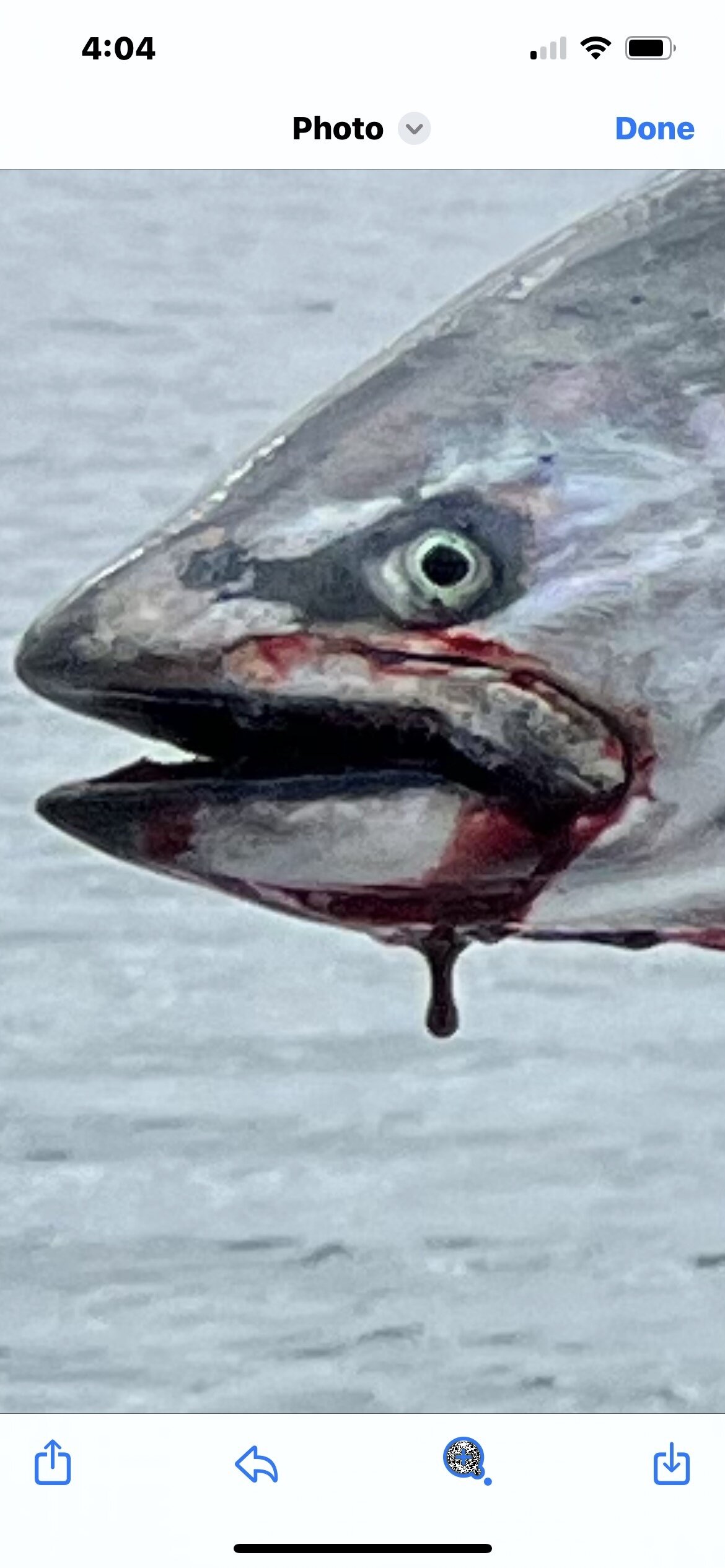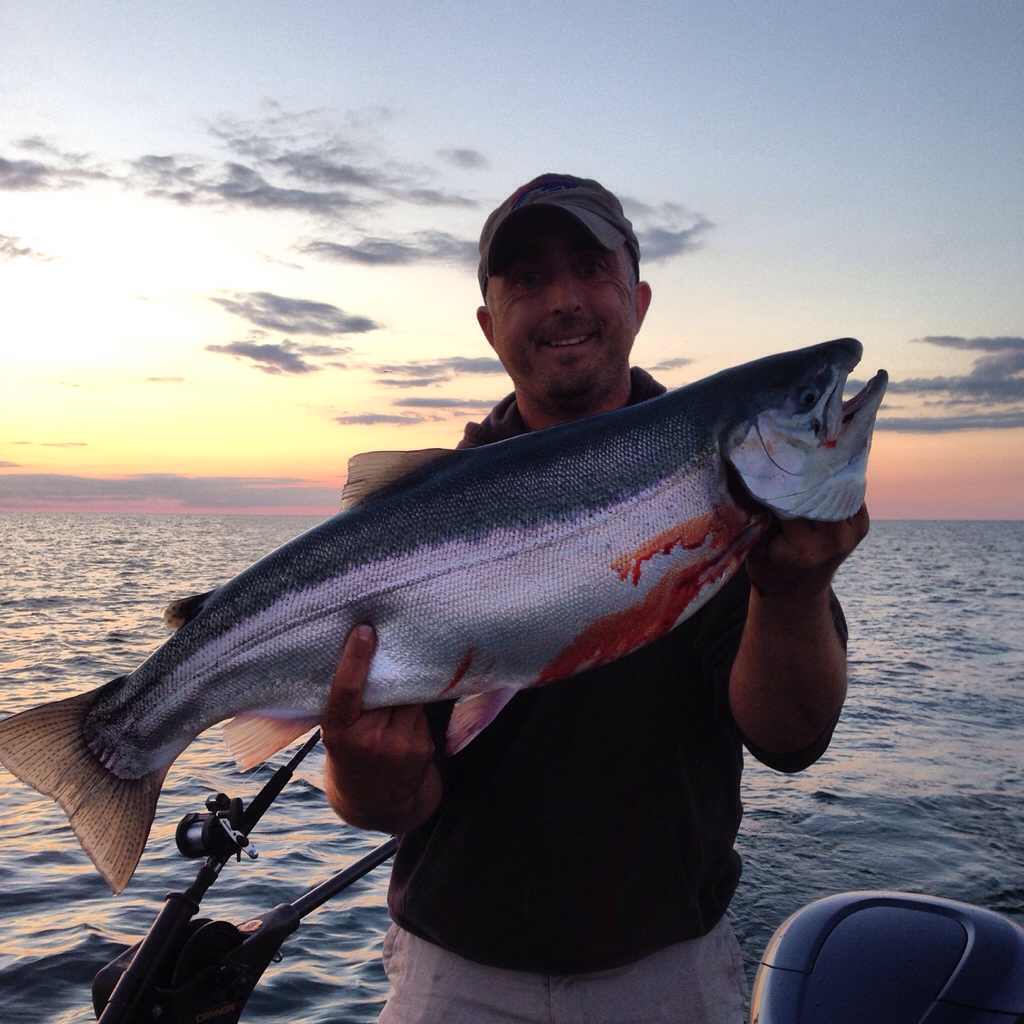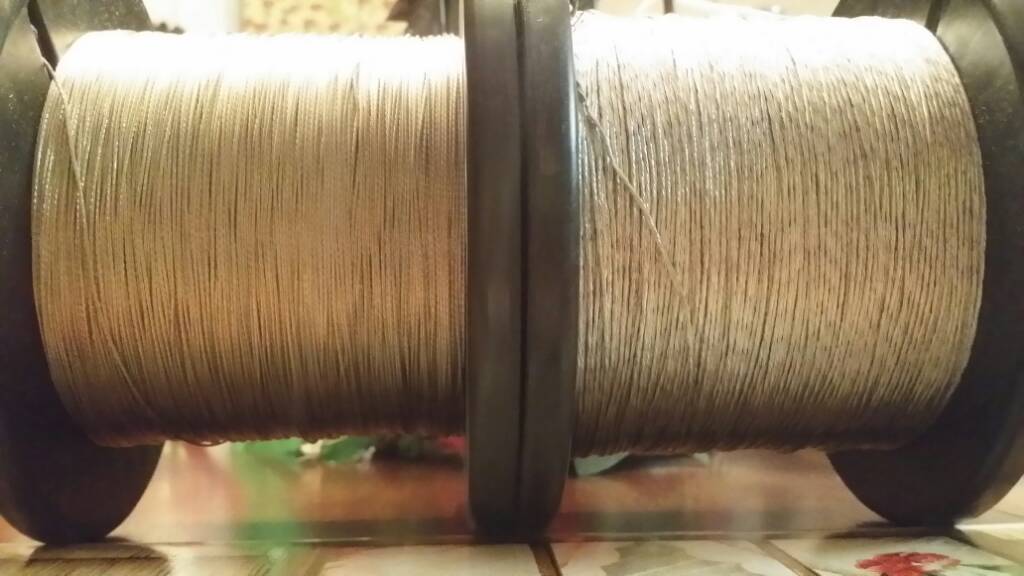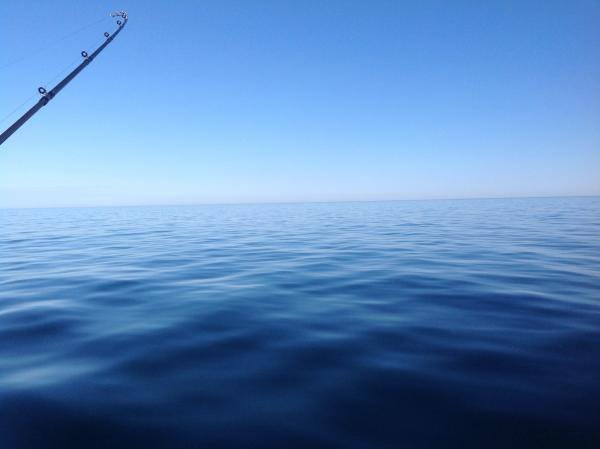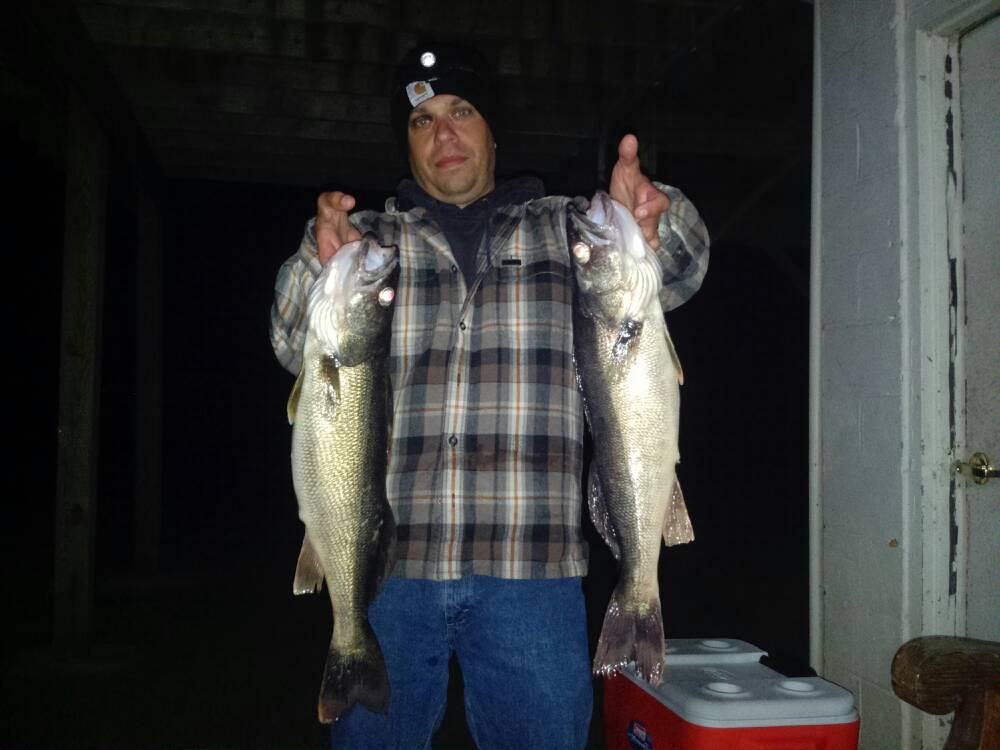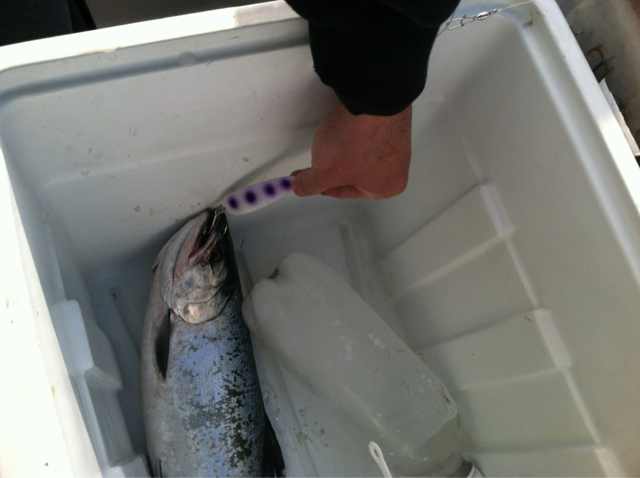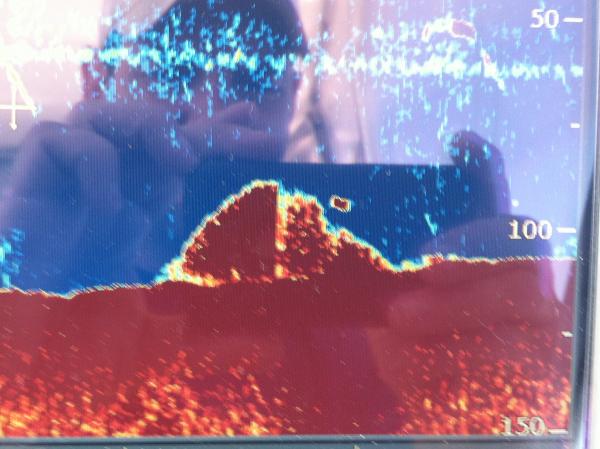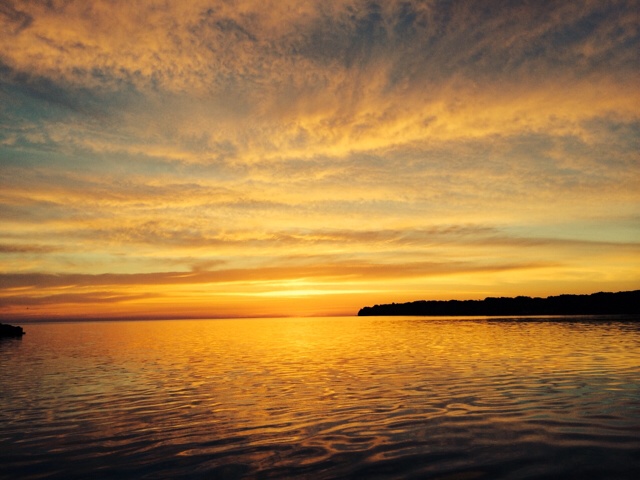-
Posts
7,342 -
Joined
-
Last visited
Everything posted by Gill-T
-

Olcott Fishing?
Gill-T replied to jpiatkowski's topic in New York Fishing Reports - Lake Ontario (South Shore)
-
Not Lake Trout, not Brown Trout, not Atlantic Salmon, not steelhead, not ALL OF THESE SPECIES COMBINED could ever keep Alewives in check on Lake Ontario. Lakers have their heads buried in the rocks chasing gobies, browns do not usually get deeper than 100', Steelhead feed mostly above the thermocline. Only kings can chase alewives where they live year'round.
-
-
I will see what I can dig up on this k.i.s.s. principle. It might take me some time to research. Good news however, this week I got notification I passed my Captain-Obvious six-pack course so I should be able to help you a lot with your questions going forward.
-
I did some research and this is a picture of BIV (Dude in the middle) ...perhaps changed his name to "g BIV". Maybe Roy is referring to Roy Letcher.....Roy Larson??? Could be a new group forming. Singing, dancing, fishing.
-
Fish from the top of the thermocline up to 62 degree water out deep. I usually don't stop the boat until I find floating stuff on top of the water. Looking at the temps out deep, you probably could use a smaller size "0" dispsy (more fun, further away from boat). Leadcore can be deadly off the boards or if you don't have leadcore you can use keel sinkers or pinch-on weights. Steelhead are easy, just go out deep, fish high with bright spoons and you will get bit.
-
What if? We are getting a good taste of life without Kings the past 5 weeks. Not much fun is it? This should give everyone time for reflection on what we take for granted. Many of you have invested in six-figure trolling rigs, thousands of dollars of fishing equipment, slips, gas, and put ugly twilli tips on perfectly good fishing rods.....for what????....to do battle with Kings! By the time most have read this we will start to see Kings being caught again so before this crappy feeling goes away and is forgotten it would be good to reflect on how our schedules, excitement levels, tackle purchases etc. etc. has changed. It should bring to light just how important the world-class king fishery is to New York and that we should NEVER take it for granted. The current lack of catching I believe is due to the crazy weather we have had this year, and an excess of bait so better fishing is coming. Personally, my boat has not seen the water for 4 weeks. With all the cold water around and fish that haven't been caught, we should have a great extended pier trolling/casting season.
-

Oak Orchard
Gill-T replied to nygooseduster26's topic in New York Fishing Reports - Lake Ontario (South Shore)
What happens at the Oak.....stays at the oak. -
-

Found sunken boat “Chug-A-Lug� - seeking details of loss
Gill-T replied to Shipwreckworld's topic in Open Lake Discussion
I heard there was gold aboard that ship. -

Olcott 6/24
Gill-T replied to wnyfisherman's topic in New York Fishing Reports - Lake Ontario (South Shore)
The predominant direction of surface water movement on the west end of the lake is result of the Niagara River push west to east. It's effects can be seen on the Modis satellite imagery with green Lake Erie water reaching to Oak Orchard and extending out to approx. 200' FOW. The predominant down current (below the surface) is from the Northeast on the west end. You can have a true shearing effect off Olcott where the upper layers are cranking West to East on a West or SW wind, and the down layers are moving in the exact opposite directions. This is the reason it is super important to have a down and speed temp. So typical summer time wind direction is SW or W. Picture warm eutrophic water laden with all kinds of goodies to feed the foodweb, high in Oxygen content from Niagara Falls, high in phosphorus from the limestone cliffs flowing along the Niagara gorge and cool down current mixing with the upper layers. A PEFECT SCENARIO to hold and grow trout and salmon. Other than their home spawning grounds at Altmar, salmon have everything they need in Niagara county. Enter an East wind. A game changer. Now not only is the down current moving from NE to SW but now the surface water from the wind is aiding the push. Much of the Niagara effect gets cancelled as cold mid-lake water moves in. As the water continues to roll from the east, upwells from the bottom layers get peeled up and move in. This water should be low in Oxygen content as the basement layers usually are. Think about your feeding cycle. Would you feel like eating if you are just trying to breathe? You won't move far to chase food and if you already have food in your stomach you probably are not going to want to eat more. Everyone should pray to the great goddess of SW winds IMO. -

Streaking salmon
Gill-T replied to dirtyworm's topic in New York Fishing Reports - Lake Ontario (South Shore)
Think about how a salmon sees it's world around it. They are hanging out down there one minute and a shadow passes overhead. The fish cannot discriminate if the shadow came from a boat or a bait ball. The fish rises expecting to see bait and here comes the movement of your rigger balls....quick chase before the fish realizes it is not a food item. Hence the theory to make sure your bait is near the rigger ball. You don't want the fish to get in front of your bait. -
I can't imagine trolling inlines with all the floating weeds on the lake.
-

Streaking salmon
Gill-T replied to dirtyworm's topic in New York Fishing Reports - Lake Ontario (South Shore)
The first move I would make is tighten my leads off the ball to 10'. A mupped set-up could help with a mag spoon 8' above release with a short 10' set-back on the main. Could also be lakers that like to pull off bottom and give up after a short chase (lazy). If you suspect lakers you could put out a thin flutter spoon and troll down to 1.75-2 mph and see if you get bit. If it is kings....It might be something in your set-up is not running right. Hopefully you have a down and speed unit so you know you are running the right speed down below. Your spoons need to show the right triggering kick. Some days the fish are negative or neutral and there is nothing you can do about it. A savy driver is often the most important component to get a fish to commit. Sharp turns (crazy Ivans) or speeding up when a fish appears on the screen can help many times. Don't wait until the fish looks like it is slipping away....make your moves when the fish first appears behind your ball. -
I know from stories about hunting camps in ADK park that a traditional method to getting back deep into the backwoods involved hiring a local farmer to transport camp supplies in and out via a team of horses. I would think you would have to wait for sustained temps below 40 degrees to keep meat from spoiling before pick-up day and god forbid you needed to get out due to medical injury. Sounds like a fun adventure that I might have tried in my youth. The problem with allowing ATV's are that people abuse the privilege. Too easy to just drive around the woods and shoot deer off the back of one. I used to hunt in Colorado, but to do it right you need a team of horses. Not enough field grass to keep horses happy in camp which means bringing feed with you. Logistics are tough....too tough for most. Now if there were elk up there.........you would see a whole industry of guided horse hunts.
-
-
30 lb trilene big game main line to a barrel swivel with a leader of 20 lb trilene green XL.
-
Anyone using this rod? Listed as a planer board/leadcore rod but I was wondering if could use it as a dipsy rod as the inside rod in a four rod diver set. Thanks.
-
-

Olcott this weekend
Gill-T replied to djw13cwru's topic in New York Fishing Reports - Lake Ontario (South Shore)
This time of year the majority of food web is just getting cranked up in the upper warmer water layers. Think Photosynthesis-phytoplankton-zooplankton-baitfish-salmon and trout. If you look at the map I put up, you can tell there is an upwelling happening close to shore (colder less productive water that is probably oxygen poor). Of course those conditions can change overnight. Check before you head out. -

Olcott this weekend
Gill-T replied to djw13cwru's topic in New York Fishing Reports - Lake Ontario (South Shore)
-

Olcott this weekend
Gill-T replied to djw13cwru's topic in New York Fishing Reports - Lake Ontario (South Shore)
-

wilson 6-8-14
Gill-T replied to Albemarle16's topic in New York Fishing Reports - Lake Ontario (South Shore)
I've got those ......pain in the arse...East wind blues....duwah duwah Has anyone else found it hard to sing in text message form?

